Born on the Fourth of July
Rowe’s artistic talent shined from an early age, but she had little time to cultivate it between the farm labor of her youth and the domestic work of her adult years.
Really Free: The Radical Art of Nellie Mae Rowe
Nellie Mae Rowe (American, 1900–1982), Untitled (Nellie Riding Chicken) (detail), 1980, crayon and pencil on paper, 18 1/2 × 24 1/2 inches, gift of Judith Alexander, 2003.211. © Estate of Nellie Mae Rowe/High Museum of Art, Atlanta.
This digital publication platform builds on the High Museum of Art’s 2021–2022 exhibition and publication, Really Free: The Radical Art of Nellie Mae Rowe. Experience the exhibition and related programming, learn more about Rowe’s life and artworks, and explore multimedia content from the exhibition’s curator and other catalogue contributors here.
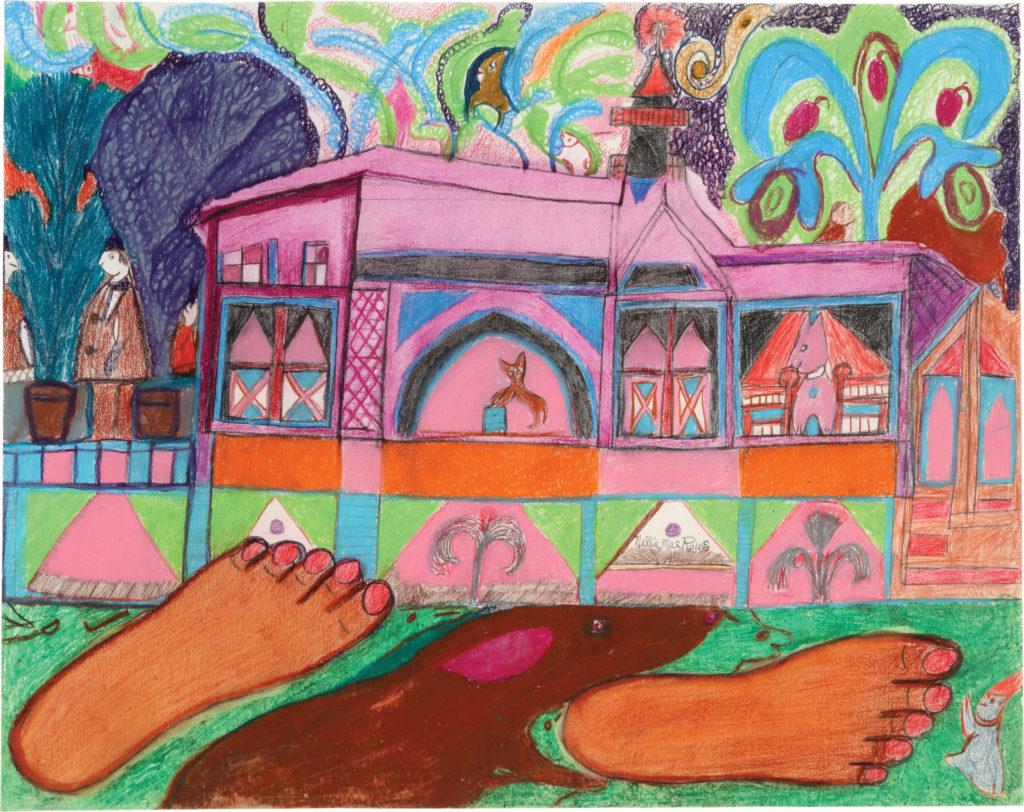
Rowe’s artistic talent shined from an early age, but she had little time to cultivate it between the farm labor of her youth and the domestic work of her adult years.
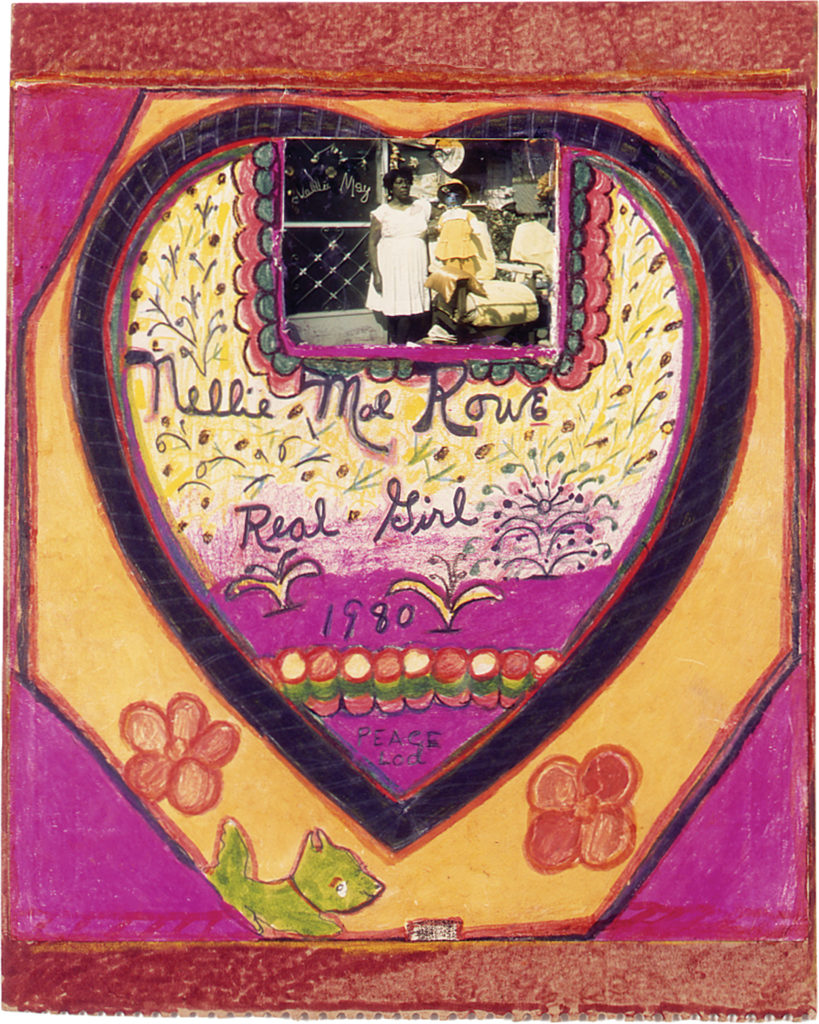
Nellie Mae Rowe recognized how childhood represents a state of freedom, exploration, and creative production that she was unable to enjoy as a girl and throughout most of her adult life.
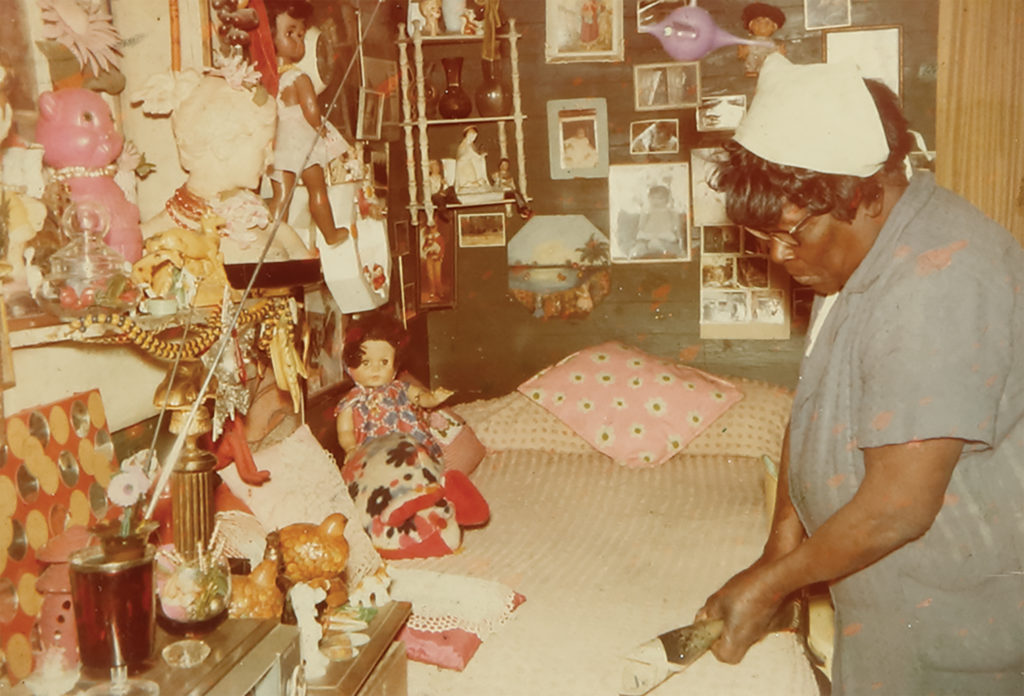
Rowe’s embrace of cast-off materials was grounded not only in the circumstance of scarcity but in a belief in the reuse of materials that has defined the practice of so many artists—trained and untrained—who began making art from everyday objects in the 1900s.
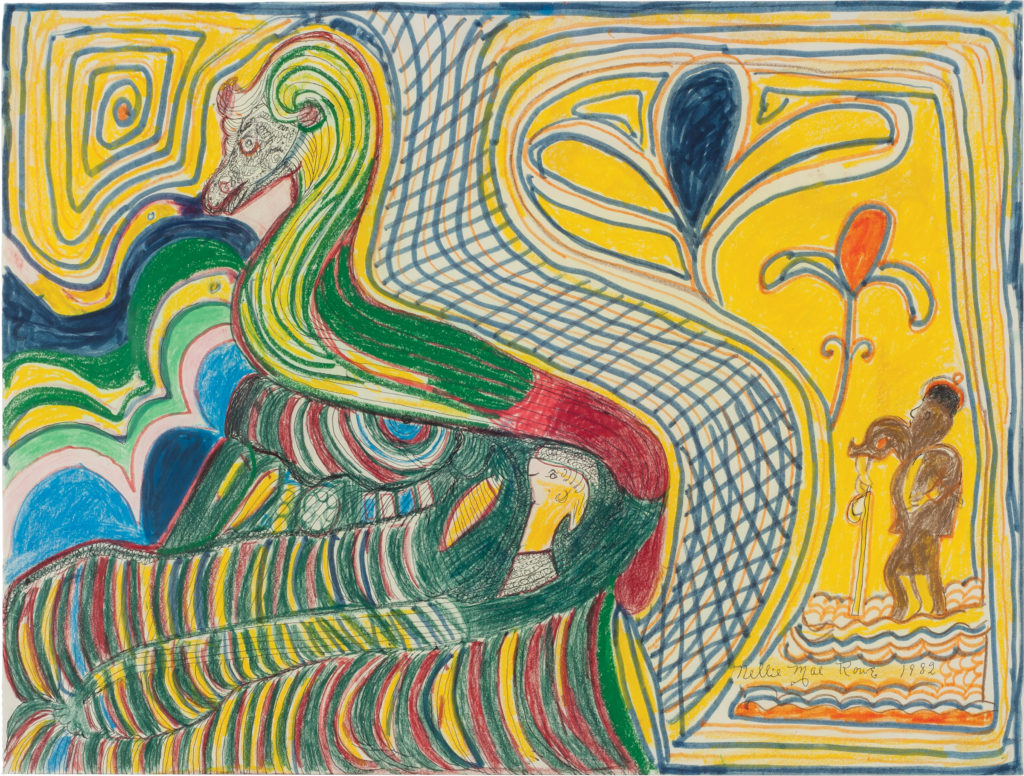
With increased access to art supplies and unprecedented income from her work, Rowe produced dozens of her most spectacular drawings during the final years of her life.
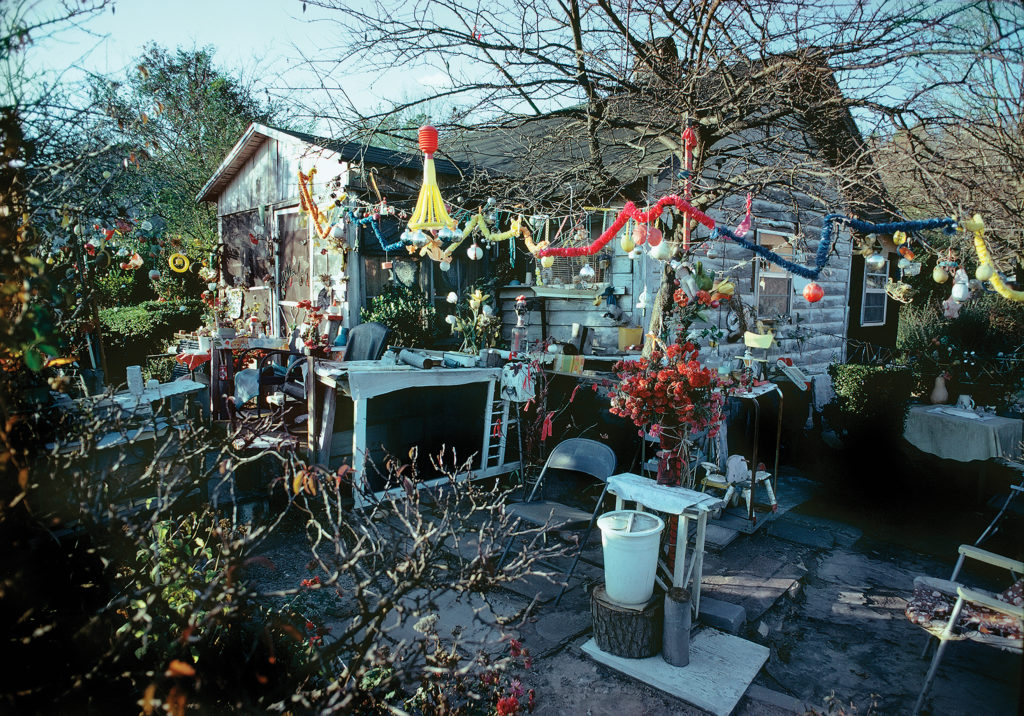
At the same time Rowe revived her drawing practice, she transformed her home and property on the busy thoroughfare of Paces Ferry Road into her Playhouse, creating what one writer for the Atlanta Daily World called “a complete artistic explosion.”